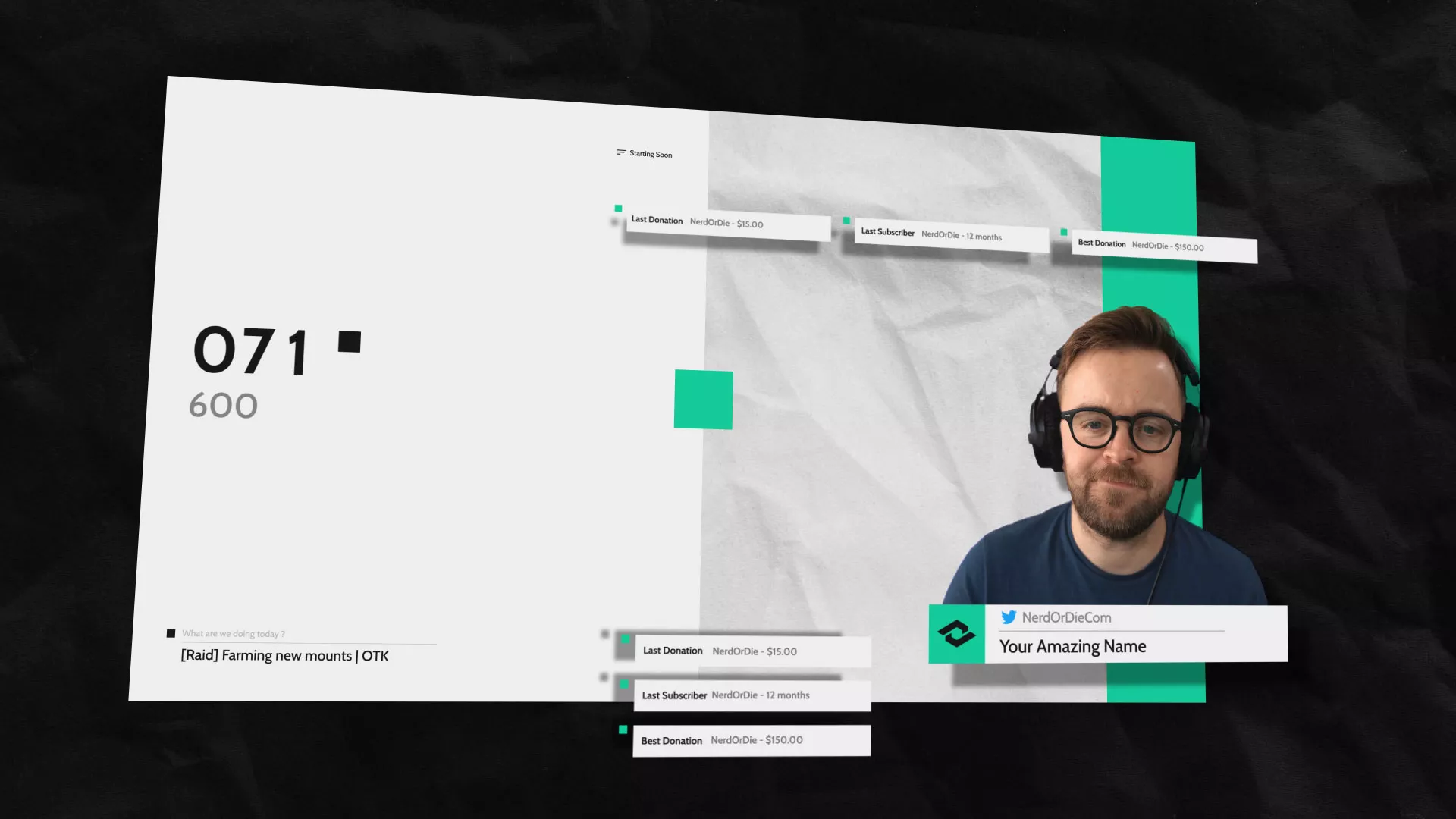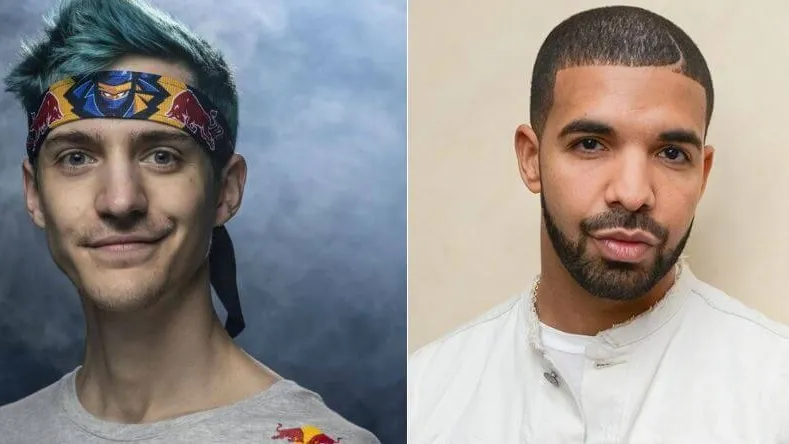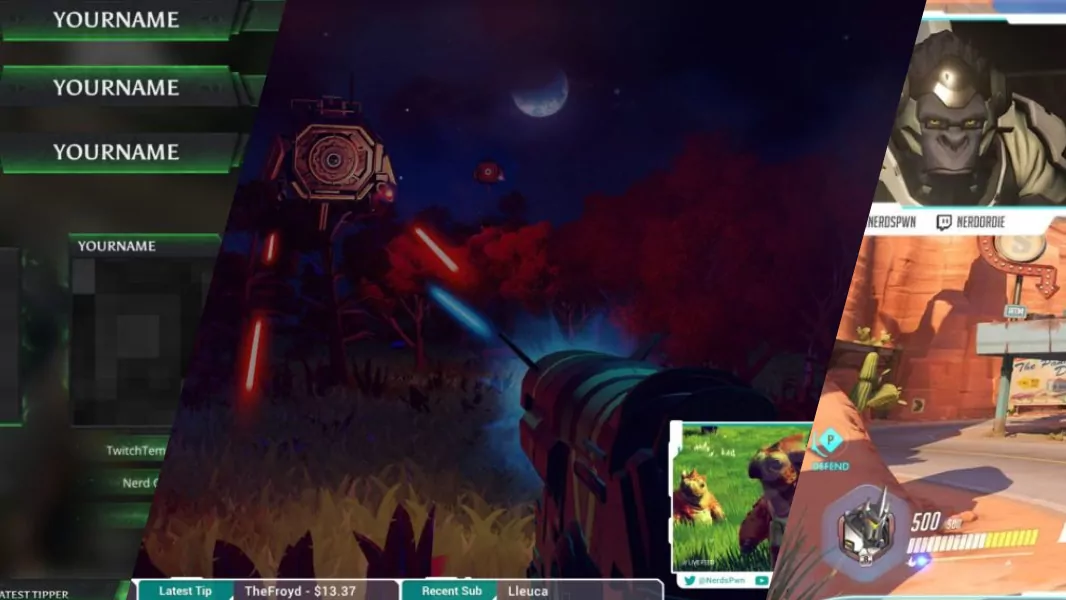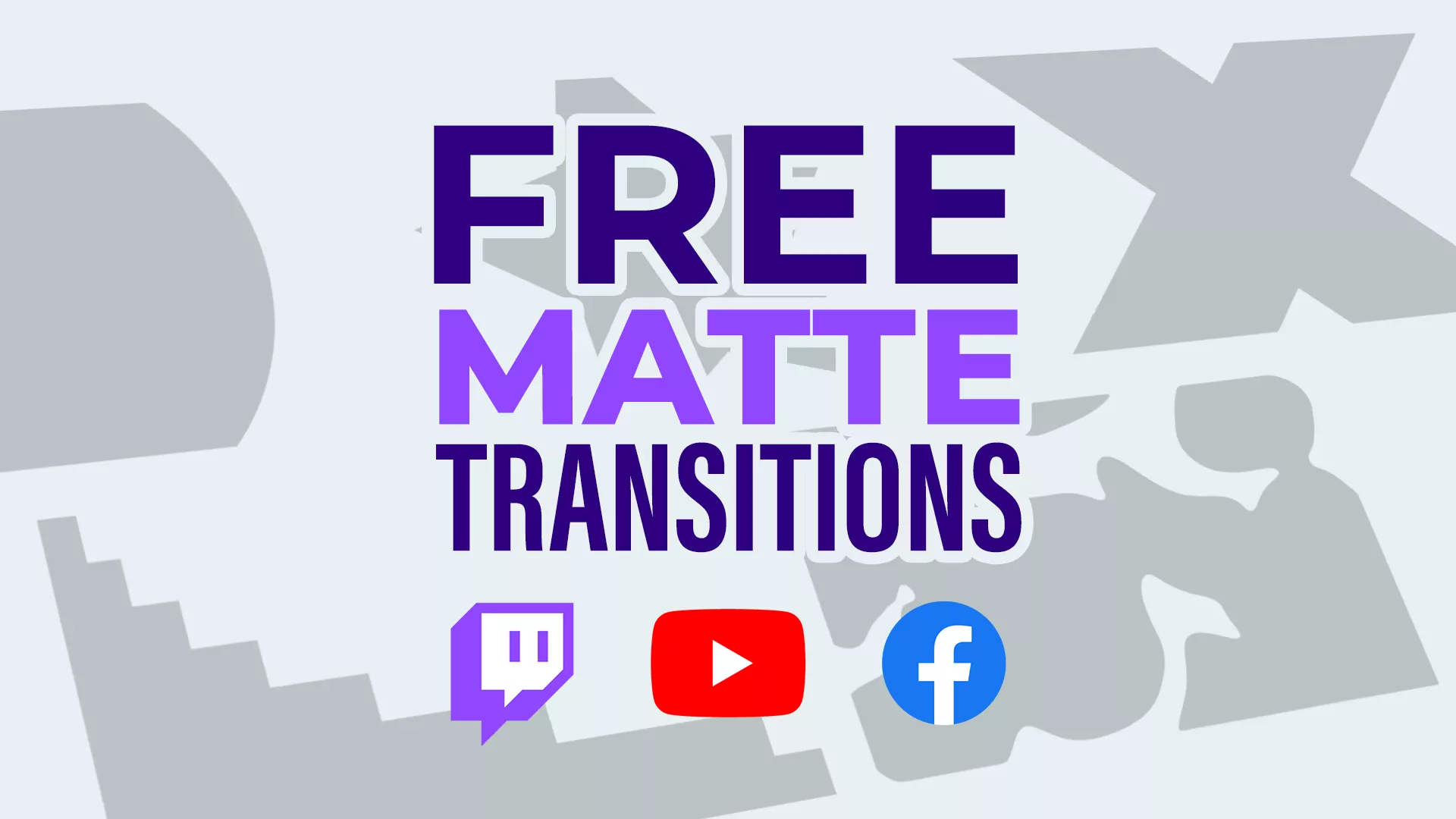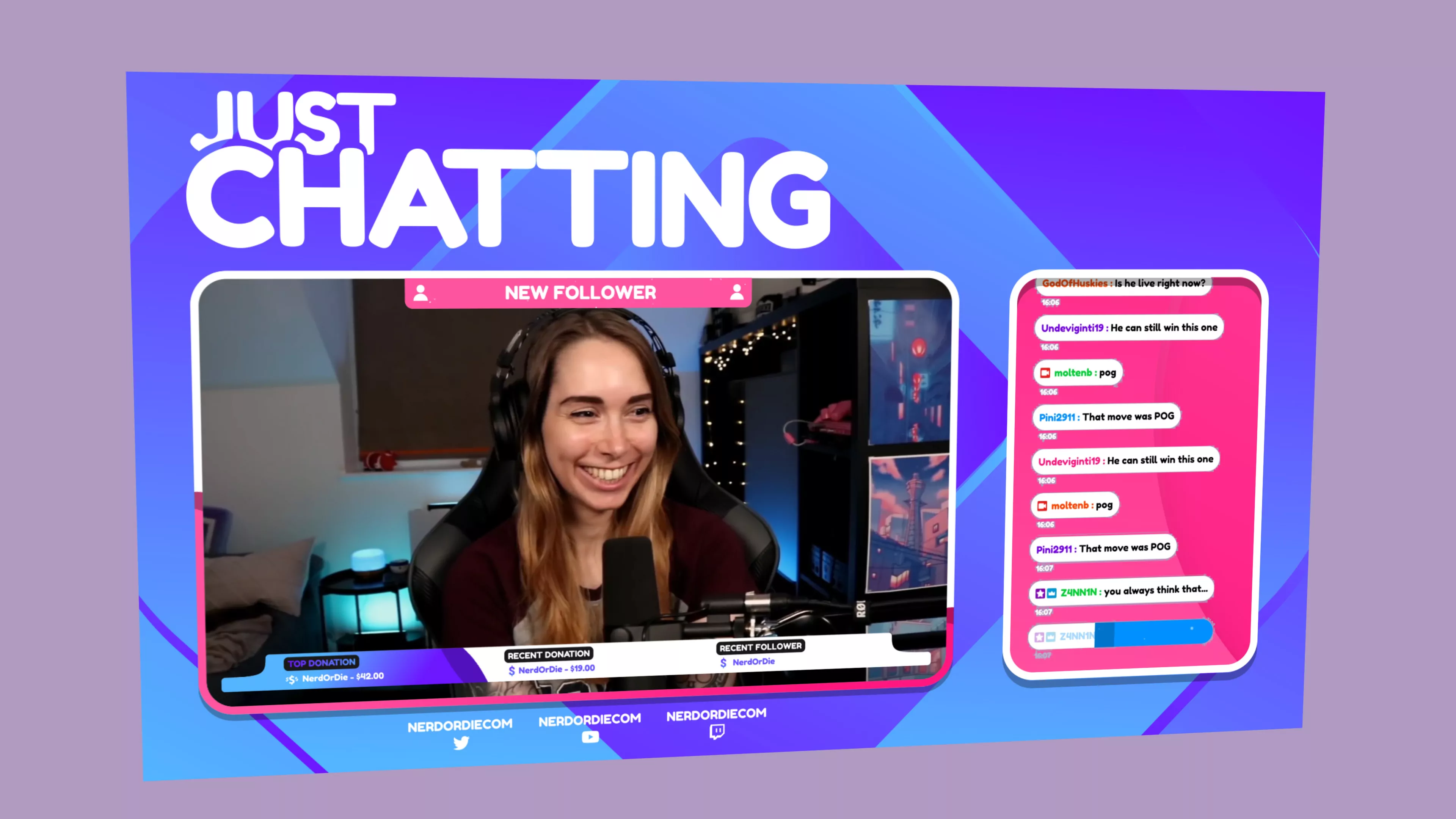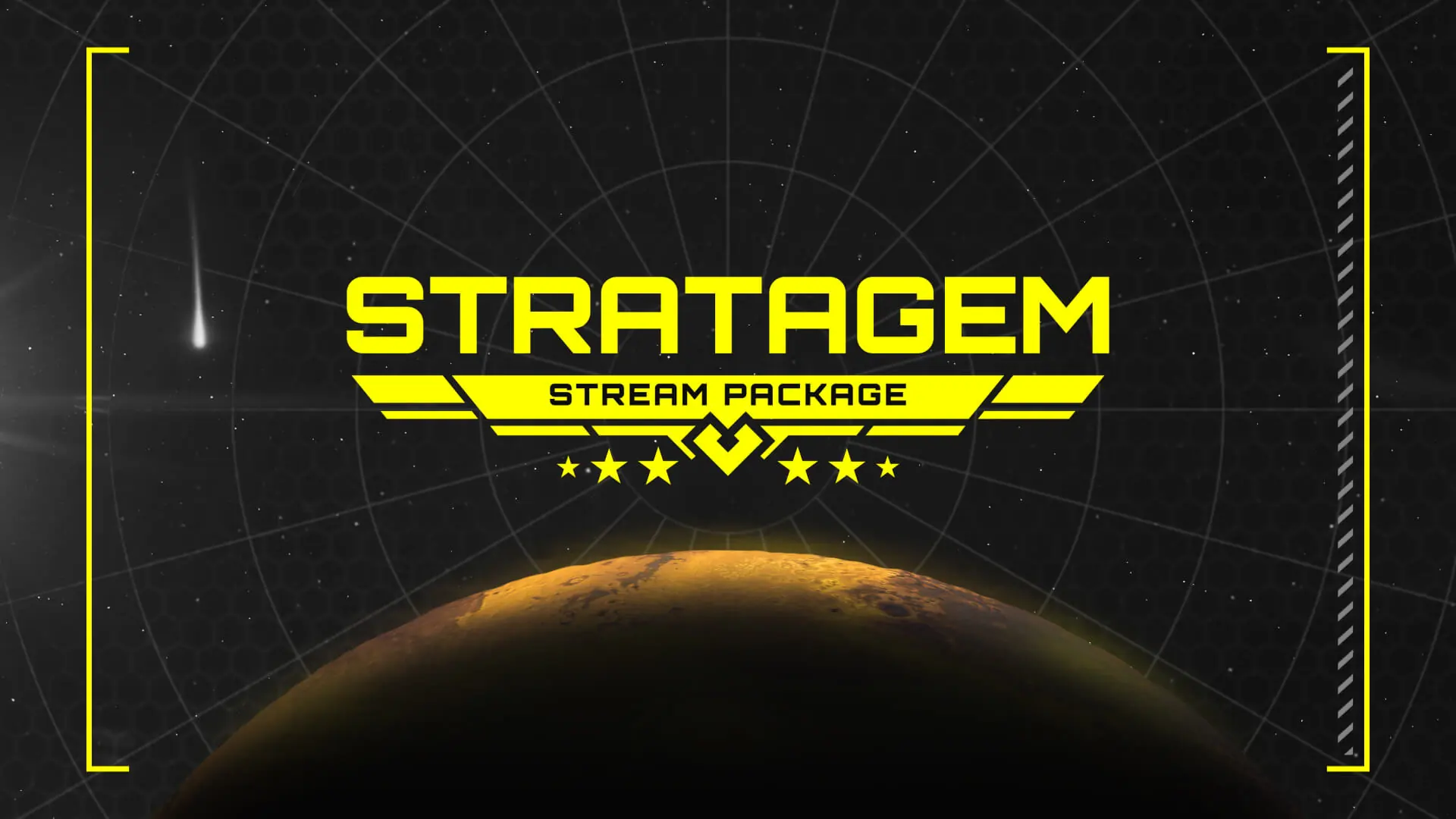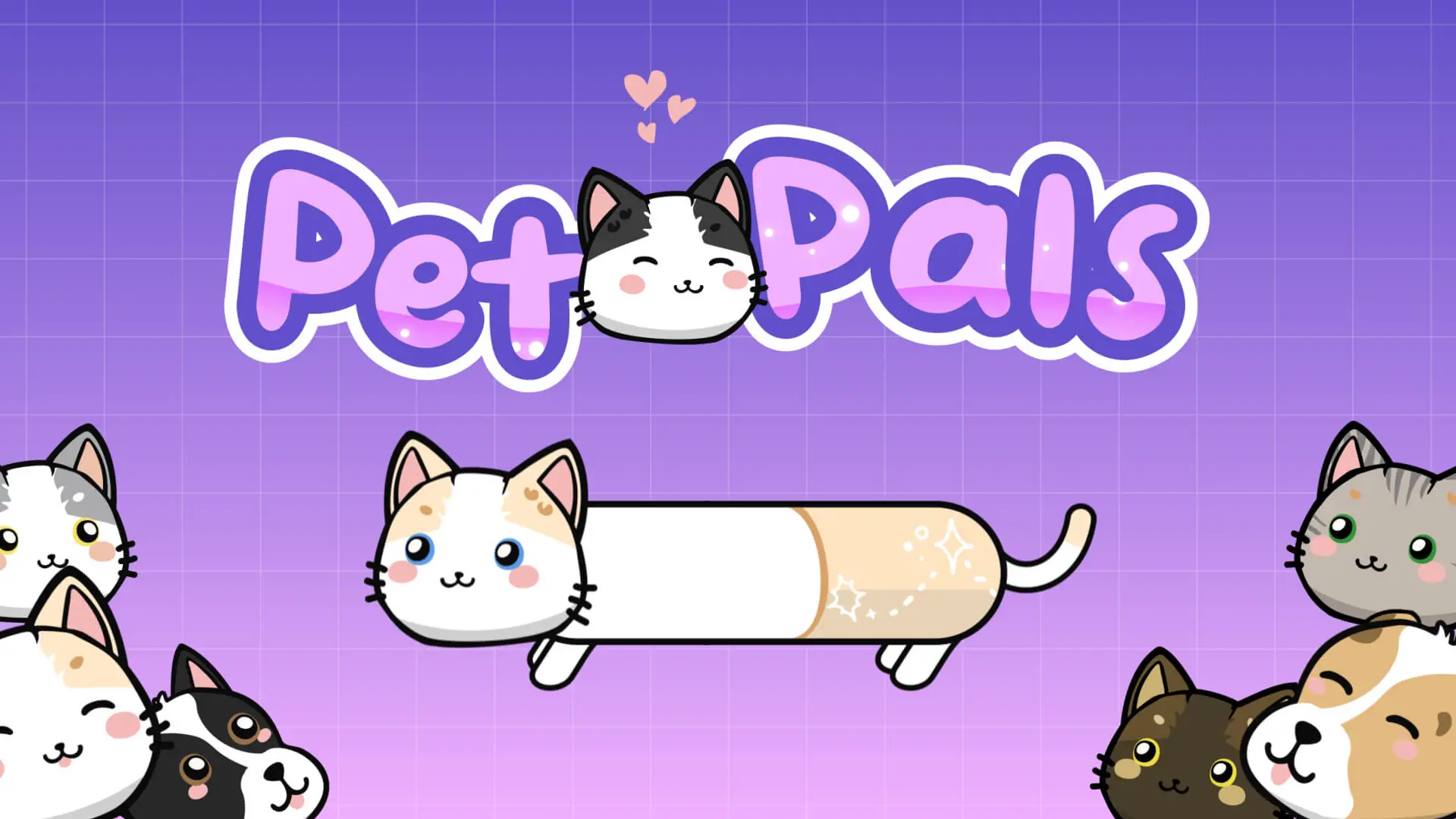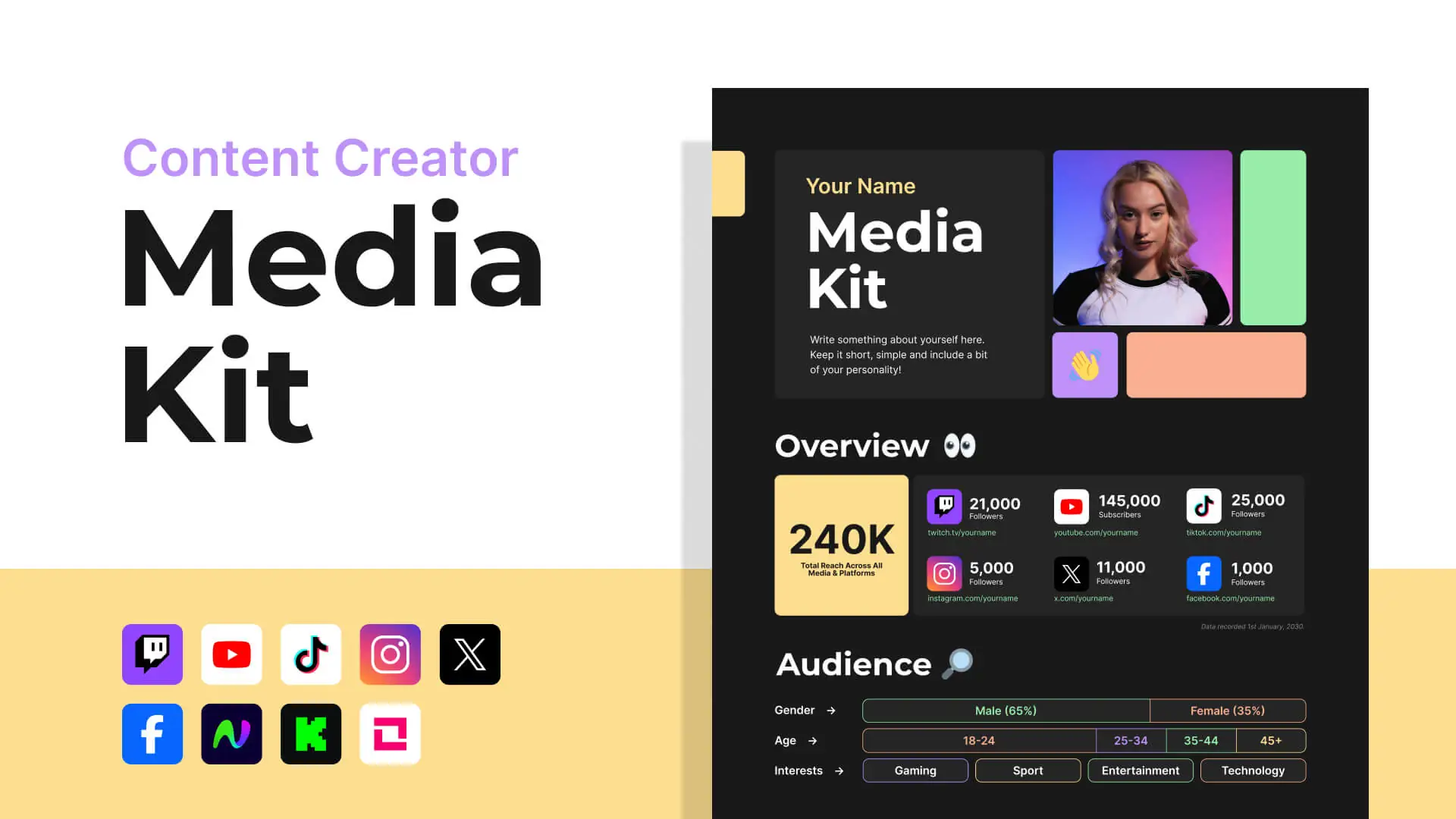In this video we’re going to set up our Twitch account and chat moderator bot before we stream.
The first thing we need to do is go through our settings for our Twitch account. Let’s log into Twitch click our name at the top and then select settings. In the first tab, we can change how our name appears in Twitch chat, update our Email, add an Avatar or profile picture, and write a bio to give our viewers a bit more information about us. I’ll quickly add a logo in, and write a generic bio – let’s hit save changes and move to the Turbo tab.
Turbo is a subscription based membership that provides you benefits such as ad-free viewing, custom emotes, and even a cool chat badge. If you’re like me, and watch a lot of Twitch on mobile devices, you may want to consider a subscription to this.
Moving on to the channels & and videos tab, we’ll first notice where we can upload a video player banner, or offline image. You’ll want to choose an image with a 16:9 aspect ratio – and something that represents your stream. Nerd or Die is actually working on an image creator similar to our panel and overlay maker, so make sure to subscribe to see when that launches – so that you can make your own. Anyways, if you have a file, upload it here. The mature content check box is for those that plan on streaming content that may be inappropriate for younger audiences. Checking this box does not exclude you from the terms of service. The next option, archived broadcasts, will automatically save your streams on the Twitch servers. This will allow you to create highlighted clips, as well export videos to YouTube, if enabled. Let’s check mark this option.
The Stream Delay option is a feature that will help reduce delay between what’s happening live, to what your viewers are seeing. This option may cause buffering for viewers with poor connections. Let’s enable this – but if you have a lot viewers in chat talking about buffering issues, it may be worthwhile to disable it and see if it helps.
Authorized broadcasters allows other people to stream to your channel. You can use this box to invite and authorize them.
Let’s move on to our chat options. If you’re not planning on using a chatbot, which I’ll show you how to set up shortly, then you may want to consider enabling block hyperlinks. This will purge any chat messages that contains links. There’s a lot of spam bots out there, as well people that will link harmful sites. We can leave this disabled, since we’ll setup nightbot in just a moment.
Twitch will automatically filter globally banned words, but if you’d like to add some that aren’t included in their list – you can do so here. You can also opt-out of filtering globally banned words with this next option. The last option in this section will show you any users that have been banned from your channel. Let’s save changes and move on to Security and Privacy.
Here, you can change your password, as well as set up Two-Factor authentication. If you’re concerned about your channels security, Two-Factor authentication will definitely help put your mind at ease.
Here, you can also disable exporting to YouTube, if you want to protect your channel’s content. The remaining options will offer privacy when it comes to messages from “strangers”. This basically means any user that you don’t follow.
After we save changes we can check out the notifications tab. Most of these options are meant for using Twitch as a viewer, but the ones important for us as new broadcasters are under “Email Me When”. We can set Email alerts for when we receive a private message, gain new followers, and when a video can be created (which means we can make a highlight or export to YouTube). We can also receive an Email when someone makes us an editor of their channel, meaning we can create highlights and YouTube exports for other channels. Read through the rest of the options, and set up as needed, let’s save changes.
The connections tab offers links with Blizzard and Stream. I personally haven’t found these connections too useful. You can also set up YouTube integration, so that you can export VODs, or videos on demand, to your YouTube channel. With Facebook, you can enable one click login through your Facebook account, and with the Twitter connection you can setup automatic Tweets when you go live – as well as send tweets through the new channel feed, which I’ll show you shortly.
The “Other Connections” represents any apps that we have connected to our Twitch Account. If you ever decide to, you can disable them here.
The last tab for subscriptions will cover the channels you’re subbed to. Let’s not worry about that, and go to our Twitch Dashboard. The Twitch Dashboard is where we can update our stream title, as well as set what game we’re playing. Titles will be important to let viewers know what we’re up to, and the game category will help us be found in the game directories. I’ll actually make a quick change to mine and then hit update.
We don’t need to worry about the remaining tabs, but if you’re interested, make sure to check them out. Let’s go ahead and click the drop down at the top and go to our Profile. Our profile is where viewers will go to watch Past broadcasts, highlights, and be able to see who we follow, as well as who follows us. We can add a profile bio here, as well. At the top, you’ll notice the ability to add a profile banner, which can be any image we feel represents our stream. You can upload pretty much any image, but their recommended size is 900×480. As I mentioned before, Nerd or Die will have an offline image creator in the near future – which will also work have the capability of making an image for this type of file as well.
Anyways, once we’re done here, let’s go ahead and move to the final page we need to set up on Twitch, our channel’s page. You can get here by using the Dropdown and clicking channel, or just entering in your stream channel URL – in my case this is Twitch.tv/NerdOrDie.
If you have a past broadcast already, it will appear at the top. We will also notice the ability to update our broadcast title and game on this page if needed. Our offline image will load in the section where our video feed will be, when we’re not live. Let’s scroll down and take a look at the information below where our video feed will show.
The first thing I want to point out is our panels. Panels are basically sections that will allow us to display different information about our stream. You can see that I already have some panels added in for my channel, but let me show you how to add your own. First, if you need some images to use for this section, you can use our panel maker on NerdOrDie.com to customize each section – the link will be in the description below. Panels typically include information about the streamer, the schedule they’ll be live, chat commands, social media, and donation or tip information – of course you can put whatever you’d like in these panels. Remember that donation page we talked about in a previous video? Let’s go ahead and set that up. First, let’s turn on edit panels by clicking this switch. To add a new panel, click the big plus. You can enter a title for your panel here, which will appear in plain text, but the image that we created will actually act as our header, so we don’t need to add one.
Let’s click Add Image and upload one of the new panel images we just downloaded. Once it’s uploaded, we can drag around these boxes to crop if needed. Images here can be 320px width by 320px in height. Let’s go ahead and hit done.
Let’s paste the URL of the page we’d like to link to in the next section.
Finally, you can add a description, or text to include in each panel. So, I’ll put – Thanks for watching and deciding to support my stream! To further customize our panels, we can use markdown, which is a simple formatting language, to make our panels look a bit nicer, and add things like links into this area.
Let’s click the markdown link. If we scroll down a bit we can see the formatting options that are available. The left column shows what we type into our description box, and the right side displays how it will display to our viewers. So,let me add in a link to my description. To make this easy, I’ll just copy the format shown in the example. I’ll go back to my panel description box, hit enter to skip down a few spaces, and paste in the text I just copied. I can change the word inside the brackets to what I’d want it to say, so I’ll change it to Click here to donate! Next, in parentheses put where I want this to link to. I’ll paste in my donation page. When you’re done with your design and information hit submit to save your panel. You’ll also be able to remove a panel here if needed.
You’ll want to take some time and repeat this process as needed, to make sure your viewers will have all the information you’d like to share. If you ever need to rearrange your panels, you can simply click and drag them into the position that you’d like.
When we’re all done, let’s turn the switch to off. Sometime you may need to reload your channel’s page to see all the changes.
The final thing on this page that we can use is the channel feed. You can click this switch to turn on the feed. This is a great way to make Twitter like updates on your channels page. It’s very useful to let viewers know anything new that’s going on with your channel, or give them a quick update about any information you may want to share. If your account is linked to Twitter, you can also share your update to Twitter here, by ticking this box. Clicking the gear for any updates will allow you to delete, share, or report any posts.
The last thing I’d like to show you before we go live is how to set up a chat bot to moderate our chat messages. There’s a lot of different chat bots out there, but let’s go ahead and set up NightBot, one of the most popular. Head to NightBot.TV and login, let’s login with our Twitch account. The first thing you’ll want to do is have the bot join your chat channel. We can do this by hitting Join Channel at the top. We’ll get a message about modding nightbot, which will give it the capability to timeout users, purge links, and more. I’ll quickly hop over to my channel’s chat and type /mod nightbot . If we ever decide to stop using Nightbot, we can use /unmod Nightbot, and go back to the NightBot web page and hit Part channel.
Nightbot offers a lot to your chat channel, and we’ll cover different features in future videos, but let’s set up spam protection – click the link here on the left to go to these options. Here we’ll see different filters we can enable and disable. These options are all pretty straightforward, so just decide which ones work best for your channel. Hit enable to turn on any of these filters. For example, if we want Nightbot to timeout anyone that posts a link, we can simply enable it here. Each filter has its own set of options. Let’s take a look at the link options.
For links, we can set a whitelist of links, or links from certain domains that we’d like to allow. Let’s say you want to allow users to post imgur pictures and YouTube, but no other links. We can type in imgur.com on one line, hit enter, and type youtube.com on the next. Now, any links from YouTube and Imgur will be allowed, but all others will be purged. We can also set how long to time users out for if they posts links. Nightbot will always timeout chatters for 5 seconds for the first offense, and then the number here is how long chatters will be timed out for the second offense. You can use this drop down to choose an exemption level, which is useful if you want to allow different types of viewers, such as moderators to do certain things in chat. The silent option will tell the bot to not post any responses if they take action on chatters. The custom message is what what NightBot will say in chat if it takes action on a user. I’ll go ahead and hit submit.
As you may see, chat bots can be extremely useful for new streamers, as it will help control what type of environment your chat has – without you needing to monitor and moderate it yourself. Worrying about users spamming too many emotes or links is something that we want out of our minds when we’re first starting our stream. Most bots can do a lot more than just moderate chat and I highly recommend taking the time and setting up your chat bot properly.
Alright, with that, we’re ready to stream! In the next video we’ll talk about going live on Twitch, I’ll also share some tips I have to help you improve your stream as well.
If you have any questions about this video, let me know in the comments below.
The Core OBS Studio Tutorials
Get the free graphics used in these videos.
- Introduction to our OBS Studio Tutorial Series
- OBS Studio Vs OBS Classic
- Installing and Setting Up Profiles In OBS Studio
- Best OBS Studio Settings
- In-depth look at OBS Studio Sources
- Using OBS Studio Filters
- Setting Up OBS Studio Scenes
- What Notification Should You Use With Twitch?
- Setting Up Your Twitch Account Before You Stream (current post)
- Streaming Live on Twitch and How to Improve Your Stream
- OBS Studio Updates – Alt Cropping, New Transitions, and Source Snapping
New Posts
Premium and Free Twitch Overlays Templates
April 20, 2024
Twitch overlay templates are what we do best. Here is a selection of freebies…
0 Comments7 Minutes
Streamers VS Mainstream Media
April 8, 2024
The digital landscape is ever-evolving, and with it, the rise of streaming in…
0 Comments7 Minutes
Free Twitch Overlays, Alerts, and Widgets
March 3, 2024
Free twitch overlays, alerts, and stream widgets are something that we’ve been…
0 Comments9 Minutes
